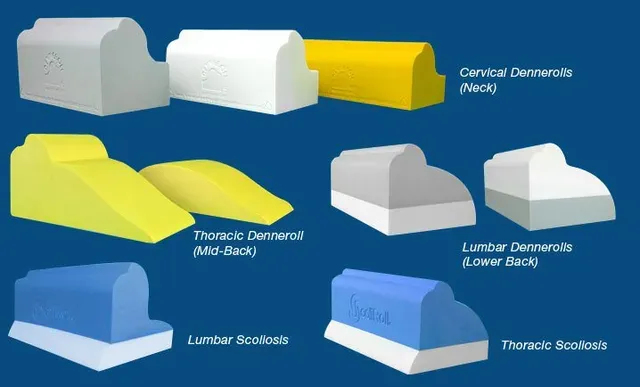NZ Researcher Silenced
Katrina Borthwick - 2nd September 2024
A recent paper on the overuse of spinal imaging (usually X-rays), titled “An investigation into the chiropractic practice and communication of routine repetitive radiographic imaging for the location of postural misalignments” and led by New Zealand researcher Brogan Williams (in collaboration with others from Australia and the US), has criticised the distributor of a chiropractic product called Denneroll. Denneroll is a US company, but their products are distributed in New Zealand and the contact given for distribution here is a Hawke’s Bay Chiropractor – Rosina Walker.
The paper was retracted in June, after the distributor complained the paper made “very serious, incorrect and libelous statements” and threatened legal action. They said that “the data presented against this product lacks scientific backing.”
In response, “the authors of the manuscript acknowledged the error.” And they agreed to retract the paper. The paper was quietly republished with the comments edited out on the 1st of August, with no mention of the previous retraction.
What the paper found
The paper argues that the use of X-rays by chiropractors to diagnose the cause of their patients’ pain is fundamentally flawed, because:
“an X-ray represents a “snapshot” of the structural appearance of the spine and gives no indication of the current function of the spine. The health and well-being of any system, including the spinal motion segments, depend on the inter-relationship between structure and function. Pain, tissue damage, and injury are not always directly correlated. Due to such a high incidence of abnormalities found in asymptomatic patients, the diagnostic validity of X-rays can be questioned, especially when used in isolation of history and/or proper clinical assessment. The utility of routine X-rays is, therefore, questionable. One may posit that their application promotes overdiagnosis, and unvalidated treatment of X-ray findings (such as changes in postural curvature), which may mislead patients into believing these changes are directly responsible for their pain.”
They go on to state that “research has concluded that strong evidence links various potential harms with routine, repeated X-rays, such as altered treatment procedures, overdiagnosis, radiation exposure, and unnecessary costs.” There is a good discussion of the radiation risks in this paper that concludes “it is not currently possible to define a ‘safe’ level of radiation exposure, with no additional risk. Without definitive thresholds of safe levels of radiation exposure, it should be assumed that some level of risk is associated with the use of X-rays.” So even if there are no concerns as to costs, X-ray use should always be clinically justifiable, and usage should be as low as possible.
The product
The products Denneroll is selling mainly have the appearance of foam wedges, blocks or lumbar rolls, and can apparently “create a stretch which can improve movement, relieve muscle tension, and assist in the correction of poor spinal curves.”

As part of their diagnostic and monitoring programme that sits alongside the use of the product, Denneroll makes use of frequent spinal imaging.
The distributor (Deed Harrison) said that the product was based on his father, Donald Harrison’s work, called Chiropractic Biophysics (CBP) What is CBP® – Chiropractic BioPhysics (idealspine.com) This advocates periodic X-rays to determine the position of the spine, then care using chiropractic techniques such as manipulation, traction and supports to correct it.

Supporting evidence for Chiropractic Biophysics
It was refreshing to read the importance this distributor places on claims being backed scientifically. After all, that is the basis for their complaint, that the criticisms of their product in the retracted paper lack scientific backing. So, naturally, this piqued my curiosity. How are they backing up their claims around their product and treatment methodology? Are these frequent scans indeed scientifically supported
Denneroll does have a research section on their website, but it really just points to positive things that may happen if spinal posture is improved. I couldn’t see any research establishing a causal link between their products or spinal imaging and correct spinal posture outcomes. So, instead, I went onto the CBP website, which the distributor cited as a source. There are 55 references cited on the page that describes the CBP technique.
This is the total of what I found:
- 31 papers have one of the Harrisons (Deed or his dad Donald) mentioned as the author or lead author. 6 papers have one of the Harrisons as a co-author. They also list what looks like a journal reference, but turns out to be a reference to their own website where they link 329 published/in press research papers. Publications – Chiropractic BioPhysics NonProfit (cbpnonprofit.com) . Almost all of these have one of the Harrisons as an author or co-author. A few have other people that have written joint papers with them. There are others from various Chiropractic or pseudoscientific journals.
- 4 articles not involving the Harrisons, but published in the Journal of Manipulative and Physiological Therapeutics (Journal of Manipulative and Physiological Therapeutics - Wikipedia) which according to Wikipedia is a “medical journal of chiropractic, the alternative medicine practice based in pseudoscientific ideas.” It is the official Journal of the American Chiropractic Association.
- 3 papers on scoliosis therapy - Scoliosis is a medical condition in which a person’s spine has an irregular curve and is quite abnormal. This research would at best be irrelevant to those without scoliosis. For adults the treatment for scoliosis is usually pain medication, posture checking, bracing and/or surgery. Scoliosis - Wikipedia Trying to generalise findings here to the general population is akin to testing trainers on people with broken ankles.
- In a similar vein there is this paper - A review of resistance exercise and posture realignment - PubMed (nih.gov) - from 23 years ago, which found that exercises are unlikely to correct postural deviations such as excessive lumbar lordosis, scoliosis, kyphosis, and abducted scapulae
- A paper about ‘Defining Body part configurations’
- Conference talks from a long time ago: There is one paper from the proceedings from the International Conference on Spinal Manipulation 1992 (over 30 years ago). There is also a paper from the annual meeting of the International Society for the Study of the Lumbar Spine in 2002 (22 years ago). The International Society for the Study of the Lumbar Spine (issls.org)
- 3 papers about the risk of radiation that were published 20, 42 and 45 years ago respectively.
- A paper - Trial into the effects of repeated neck retractions in normal subjects - PubMed (nih.gov) - from 29 years ago that measured the immediate effects of 10, 20, and 30 repeated neck retraction movements on the retraction range of motion and resting neck posture in asymptomatic subjects and found no statistically significant difference in neck retraction range of motion, but a statistically significant change in the resting neck posture.
- A paper - Extension creep in the lumbar spine - PubMed (nih.gov) - from 29 years ago, using weight and pulley circuit loads simulating lumbar extension and flexion on the lumbar spines removed from 25 male corpses.
Conclusion
Not wanting to get sued, I have simply stated the research that this distributor has cited in support of their product, and will allow you, dear reader, to draw your own conclusions on whether these papers cited by Denneroll constitute good quality evidence of efficacy, and whether the retraction of the paper criticising Denneroll was justified.